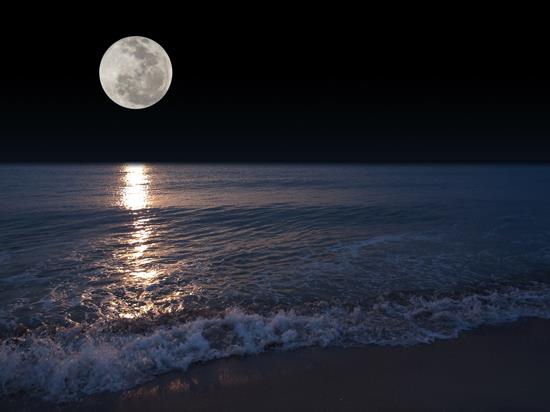Hindu rituals and dates of the full moon and the new moon

Hindus believed that the fortnightly cycle of the moon exerts a great influence on human anatomy, as well as influencing water bodies on earth in tidal cycles. During a full moon, a person may tend to become restless, irritable and short-tempered, showing signs of behavior that suggest "madness", a term derived from the Latin word for moon, "moon". In Hindu practice, there are specific rituals for the days of the new moon and full moon.
These dates are mentioned at the end of this article.
Fasting in Purnima / Full Moon
Purnima, the day of the full moon, is considered auspicious in the Hindu calendar and most devotees quickly observe during the day and pray to the presiding deity, Lord Vishnu. Only after a full day of fasting, prayers and a dip in the river do they take light food at dusk.
It is ideal for fasting or consuming light food during the full moon and on new moon days, as it is said to reduce the acid content in our system, slow down the metabolic rate and increase endurance. This restores the balance of body and mind. Prayer also helps to subdue emotions and controls the release of mood.
Fasting on Amavasya / New Moon
The Hindu calendar follows the lunar month and Amavasya, the night of the new moon, falls at the beginning of the new lunar month, which lasts around 30 days. Many Hindus observe a fast that day and offer food to their ancestors.
According to Garuda Purana (Preta Khanda), Lord Vishnu is believed to have said that the ancestors came from their descendants, to Amavasya to get their food and if nothing is offered to them they are unhappy. For this reason, Hindus prepare "shraddha" (food) and await their ancestors.
Many festivals, such as Diwali, are also observed on this day, as Amavasya marks a new beginning. Devotees swear to accept the new with optimism as the new moon ushers in the hope of a new dawn.
How to observe a Purnima Vrat / Full Moon Fast
Usually, the fasting of Purnima lasts 12 hours, from sunrise to sunset. Fasting people do not consume rice, wheat, legumes, cereals and salt during the duration this time. Some devotees take fruit and milk, but some observe it rigidly and even go without water depending on their stamina. They spend time praying to Lord Vishnu and conducting the sacred Shree Satya Narayana Vrata Puja. In the evening, after spotting the moon, they take part in "prasad" or divine food together with some light food.
How to perform a Mritunjaya Havan in Purnima
Hindus perform a "yagna" or "havan" on purnima, called Maha Mritunjaya havan. It is a significant and powerful ritual undertaken in a very simple way. The devotee first takes a bath, cleans his body and wears clean clothes. Then prepare a bowl of sweet rice and add black sesame seeds, diced "kush" grass, some vegetables and butter. Then he places the 'havan kund' to strike holy fire. On a designated area, a layer of sand is scattered and then a structure similar to a tent of wooden logs is erected and smeared with "ghee" or clarified butter. The devotee then takes three sips of Gangajaal or holy water from the Ganga river while singing "Om Vishnu" and lights the sacrificial fire by placing the camphor on the wood. Lord Vishnu, along with other gods and goddesses, are invoked, Lord Shiva:
Om trayam bakkam, yajaa-mahe
Sugan-dhim pushti-vardhanam,
Urvaa-rooka-miva bandha-naam,
Mrityor mooksheeya maamritaat.
The mantra ends with "Om Swaahaa". While saying "Om swaaha", a little help from the sweet rice offering is put on fire. This is repeated 108 times. After the completion of the "havan", the devotee must ask for forgiveness for all the mistakes he unknowingly made during the ritual. Finally, another "maha mantra" is sung 21 times:
Hare Krishna, Hare Krishna,
Krishna, Krishna Hare Hare,
Hare Rama, Hare Rama,
Rama Rama, Hare Hare.
Eventually, just as the gods and goddess were invoked at the beginning of the havan, they are asked to return to their homes after its completion.